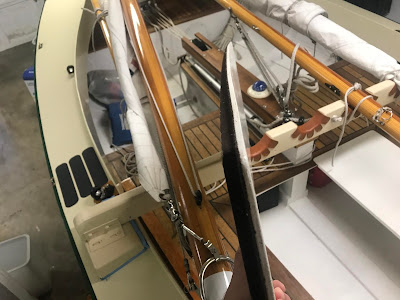I know because it took me, an experienced CAD user, nearly 3 weeks to create full sized templates for my Navigator build.
It's a task that every builder has to wrestle with.
Until now.
Working with John Welsford, I have been developing a set of Full Size Template Kits for many of his designs.
These printable template kits are available in Letter (8.5"x11"), Tabloid (11"x17"), E (36" x 48") and in metric paper sizes A0, A3 and A4. They are also available in roll-form (36" wide x 8-feet long). You print the templates on an ordinary home laser or inkjet printer, assemble the pages and cut them out to create the templates. Or take the PDF file to your local print shop and have them printed for you. Then simply trace the templates onto your plywood to get the full sized shapes. Some kits may also include bonus items like nested parts (to save plywood), and plank drawings not included with the original plans.
These are great for anyone just starting their build. They're a big time saver and are accurate.
Want a closer look? You can download some free demo copies so you can see exactly how they work and "try before you buy" them. Each kit includes detailed instructions on how to use them. Although some pages have been omitted from these demo copies, you will still be able to see what is included in the full versions by looking at the table of contents and the page arrangement diagrams. You will be able to print a template, assemble it, test it, and see how it all works, all for free.
Template kits are available for Navigator, Pathfinder, Sei, Tender Behind, Pilgrim, Longsteps, Scraps, Sherpa, Walkabout and Scallywag (coming soon). Other designs are in work. CNC cut files are also in work.
The template kits are now available for purchase as an instant digital download from Duckworks. Here is the link: https://duckworks.com/plans-by-designer/john-welsford/














